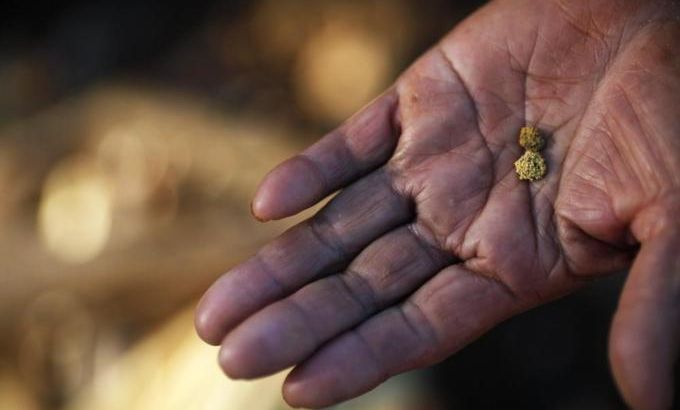
Time to monitor Guatemala’s mining sector?
Canadian company Goldcorp is accused of violating human rights and damaging the local environment around Marlin mine.
A Canadian mining company stands accused of violating human rights and damaging the environment in Guatemala.
As the price of gold has rocketed amidst global economic uncertainty, Goldcorp argues it is sharing its record revenues with an impoverished community by providing jobs and economic development.
Keep reading
list of 4 itemsAfter the Hurricane
World’s coral reefs face global bleaching crisis
Why is Germany maintaining economic ties with China?
The company owns the Marlin mine in Guatemala, which was opened in 2005 despite the objections of indigenous communities.
Guatemala has ratified an international convention requiring local consent for such projects; but this did not stop it from proceeding. Nor did it stop the World Bank from giving GoldCorp a $45m loan for the mine in contravention of its own guidelines on local consulatation.
|
“The government is probably the only player that can ensure that there is the proper regulatory, legal, political framework that enables people to even think clearly and make decisions about trade-offs, and to reduce the risk that especially local people will be hurt.“ – Lyuba Zarsky, an economist |
The mine employs more than 2,000 people, the majority of whom are Guatemalan.
Last year it produced 382,400 ounces of gold, earning the company $607m – of that local communities receive about five per cent of total revenues.
Critics point to evidence of significant environmental damage and the potential for further problems as the mine reaches the end of its productive life.
There have also been reports that local inhabitants have suffered skin diseases, birth defects and miscarriages. In addition, a 2010 study found high concentrations of heavy metals in the blood of workers and local inhabitants.
Those who resist the expansion of the mine have also been targeted.
Long-term environmental risks significantly outweigh the short-term economic benefits of the Marlin mine, according to a report released by the Global Development and Environment Institute at Tufts University last year.
According to the findings, the Guatemalan government receives only a small share of Marlin’s profits due to weak royalty and tax systems. Royalties make up six per cent of revenues, while taxes are about 15 per cent of earnings.
|
“Groups like the IMF, like the World Bank lean on countries like Guatemala, loan them money in return for structural adjustment, create a situation where services are no longer arriving to these remote communities … and then the companies come in, get money from the same international finance institutions and then they provide a fraction of what a proper service would be.“ – Dawn Paley, a journalist |
In comparison, South Africa – the world’s second largest gold producer – charged mining companies a tax of 28 per cent in 2010, in addition to other taxes and royalties.
The report also says that the environmental risk to local communities is exceptionally high and likely to increase.
Water from mine drainage poses health risks due to cyanide and heavy metal contamination. This has the potential to undermine agricultural livelihoods, further impoverishing local communities.
Comparatively, little of the royalty and tax revenue from the mine has been invested in health, education and infrastructure. And it is unclear what will happen to those projects that are underway once the mine closes.
So, does the mining sector need more oversight?
To discuss this, Inside Story Americas, with presenter Shihab Rattansi, is joined by guests: Carroll Muffett, the president of the Center for International Environmental Law; Dawn Paley, a journalist who has been covering the activities of Goldcorp for a number of years; and Lyuba Zarsky, an economist with the Monterey Institute, who co-authored a report entitled: Searching for Gold in the Highlands of Guatemala: Economic Benefits and Environmental Risks of the Marlin Mine.
MARLIN GOLD MINE
- Critics say Marlin gold mine in Guatemala is environmentally unsound
- Goldcorp and its supporters say mine led to economic development in the region
- Goldcorp says it has built schools, roads, health clinics in the region
- Reserves in the mine are expected to support production until 2017
- the region around the mine is home to two of Guatemala’s indigenous Maya groups, Mam and Sipakapense
- Poverty, illiteracy, malnutrition are high among Mam and Sipakapense groups
- Environmental activists: Water sources contaminated by mine
- Report: Guatemalan government lax in imposing environmental safeguards
- Goldcorp says foundation has started over 100 community projects